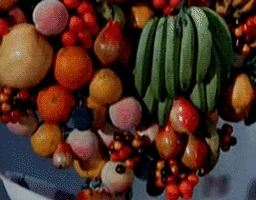As spring makes way for summer, an even greater variety of fruits are available at the market. And keeping fruit fresh not only reduces food waste but saves money, big time — and furthermore, it doesn’t mean you need to rely on plastic wrap or single-use containers.
With a few simple techniques and some reusable tools, you can extend the life of your produce and keep your fridge organized—all while being kinder to the planet.
Here’s a guide to the best ways to store different fruits in the refrigerator without plastic, plus some handy tips to keep things fresh and waste-free.
General Tips for Plastic-Free Fruit Storage
- Use breathable materials: Cotton produce bags, beeswax wraps, and linen towels help absorb moisture while allowing air circulation—ideal for many fruits.
- Glass or stainless steel containers: Great for juicy or cut fruits that need airtight storage.
- Don’t wash until ready to eat: Moisture speeds up spoilage, so wait to rinse most fruits until just before eating.
- Know what not to refrigerate: Some fruits actually last longer on the counter (more on that below).
How to Store Specific Fruits Without Plastic
🍎 Apples
- Storage method: Place in the crisper drawer, loosely wrapped in a damp cotton towel or stored in a mesh produce bag.
- Why it works: Apples like cold, humid environments. Keep them away from other fruits—especially bananas—since they release ethylene gas, which accelerates ripening.
🍓 Berries (Strawberries, Blueberries, Raspberries)
- Storage method: Line a glass or stainless steel container with a dry cloth or paper towel and place the unwashed berries inside with the lid slightly ajar.
- Extra tip: Berries are delicate and don’t last long—eat within 3–5 days.
🍇 Grapes
- Storage method: Keep them on the stem, in a breathable cloth bag or loosely covered bowl in the crisper drawer.
- Tip: Do not wash until ready to eat; excess moisture encourages mold.
🍒 Cherries
- Storage method: In a shallow glass container or bowl, loosely covered with a beeswax wrap.
- Tip: They last about a week and taste best when eaten cold.
🍑 Stone Fruits (Peaches, Plums, Nectarines)
- Storage method: Let them ripen at room temperature, then move to the fridge, if they haven’t been eaten up, in a cotton bag or on a plate loosely covered with a cloth.
- Caution: Refrigeration halts ripening, so wait until they’re soft and fragrant before chilling.
🍊 Citrus Fruits (Oranges, Lemons, Limes)
- Storage method: Store loose in the fridge, ideally in the crisper drawer or in a mesh produce bag.
- Note: These fruits don’t need a container unless they’ve been cut—then store in a sealed glass container.
🍌 Bananas
- Storage tip: Don’t refrigerate until ripe (they turn black in the fridge, though the inside stays fine). Once ripe, you can store them in a cool part of the fridge loosely wrapped in a cloth to extend their life for a few more days.
🍍 Pineapple
- Storage method: Whole pineapples can be kept on the counter. Once cut, store in a glass container in the fridge.
- Tip: Keep the cut pieces dry to avoid sogginess.
🍉 Melons (Watermelon, Cantaloupe, Honeydew)
- Storage method: Keep whole on the counter. Once sliced, place in a covered glass dish or wrap pieces in beeswax wrap and refrigerate.
*Bonus* Tools for Plastic-Free Storage








